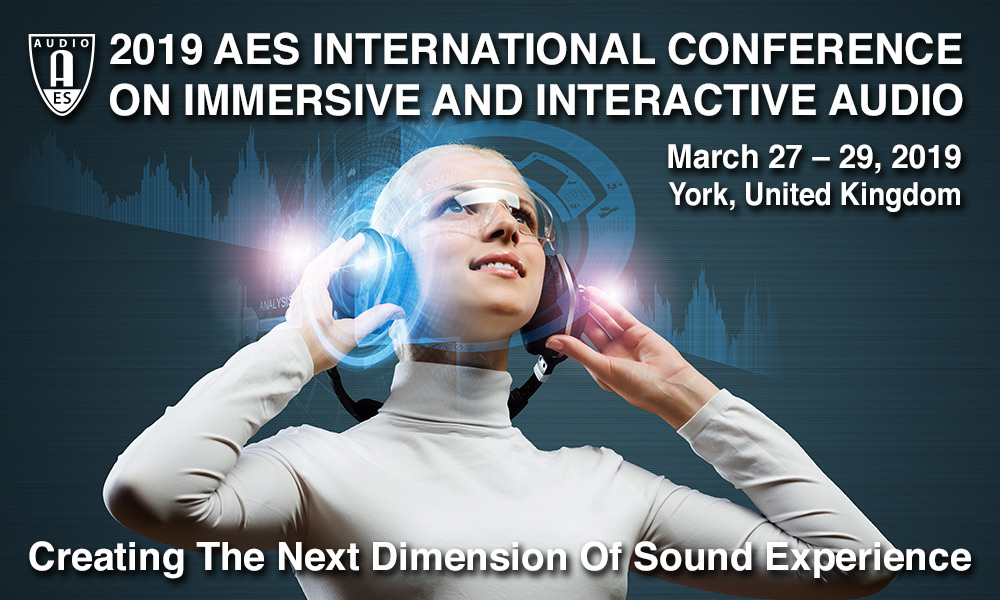| Home | Call for Contributions | Program | Registration | Venue & Facilities | Accessibility & Inclusivity | Travel | Sponsors | Committee | Twitter |

Chair: Alastair Moore
The increasing popularity of Ambisonics as a spatial audio format for streaming services poses new challenges to the existing audio coding techniques. This paper seeks to evaluate timbral distortion and localization accuracy of Ambisonic audio encoded using Opus low-bitrate compression. The study was conducted for first, third and fifth order Ambisonic signals at various bitrates reproduced over a 50-channel spherical loudspeaker configuration. This study has identified how lower bitrates reduce timbral fidelity, though this changes depending on the audio content. Localization accuracy has been found to be relatively robust even at very low bitrates. The results suggest that the user experience of spatial audio streaming services would significantly improve if third order Ambisonics would be implemented over first order.
http://www.aes.org/e-lib/browse.cfm?elib=20391
This study investigated the influence of binaural Ambisonic rendering on the perceived spatial and timbral fidelities of recordings made using main microphone arrays. Eight recordings made for different types of sound sources using various microphone techniques were encoded in Ambisonics with the orders of 1 to 5. In MUSHRA listening tests, 1st to 5th order binaural Ambisonic decoders based on the “magnitude least square (magLS)” method as well as the conventional 1st order “Cube” basic decoder were compared against the direct binauralisation of the original recording. Results generally indicated that perceived spatial and timbral quality degradations for the magLS stimuli were minimal for complex musical ensemble recordings, regardless of the order. However, significant source and microphone technique dependencies were observed.
http://www.aes.org/e-lib/browse.cfm?elib=20392
Multichannel and immersive audio technologies are usually tied to specific loudspeaker layouts. Any loudspeaker misplacement relative to these predefined positions might degrade the overall sound quality. To avoid this situation, some Next Generation Audio codecs offer the possibility to compensate for angular misplacement of loudspeakers. The experiment presented in this paper investigates the perceptual impact of loudspeakers angular misplacement in a 5.0 multichannel setup, with and without the angular compensation implemented in the MPEG-H 3D Audio decoder. Three audio formats are tested: Channel, Scene, and Object-Based contents. The experiment is conducted on two test sites and reveals that the benefit of the angular compensation essentially depends on the sound stimulus. No significant effect of the audio formats tested was found.
http://www.aes.org/e-lib/browse.cfm?elib=20393
Sound propagation is the result of several wave phenomena that need to be modeled in real time to achieve realistic and immersive audio in games and virtual reality (VR). A physical and perceptual comparison is conducted between two different approaches: an image source model (ISM) of a shoebox room, and a ray-tracing simulation using custom geometries. The physical analysis compares the results with those of an industry standard room acoustic commercial package. The perceptual evaluation is implemented in an ecologically valid immersive VR framework. Results suggest that the ISM is subjectively more preferred in small to medium rooms, while ray-tracing is more appropriate for large reverberant spaces. Thus, a combination of both methods could suit a larger variety of spaces.
http://www.aes.org/e-lib/browse.cfm?elib=20394
